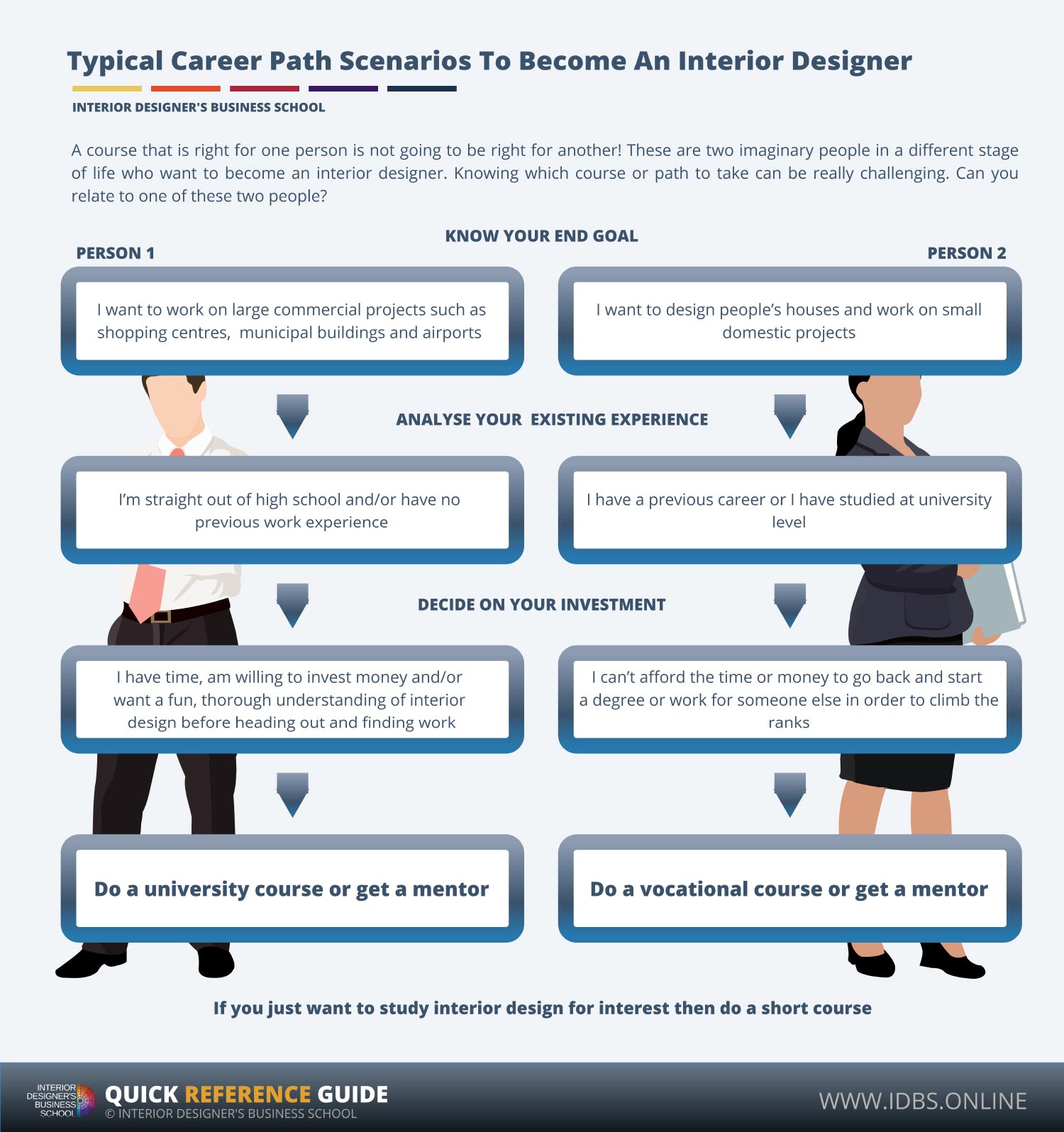To become an interior designer, you need creativity and a keen eye for detail. Formal education and practical experience also play vital roles.
Interior design is a fascinating field blending art and science. It involves creating functional and beautiful spaces. Whether you’re designing homes, offices, or public areas, the goal is to enhance the environment. Essential skills include understanding color schemes, spatial arrangements, and materials.
You must also be adept at using design software and staying current with trends. A formal education in interior design can provide a solid foundation. But hands-on experience and a strong portfolio are equally important. Ready to explore what it takes to succeed in this dynamic career? Let’s delve into the key requirements for becoming an interior designer.
Interior Design Cost Calculator
Cost Breakdown
Educational Background
An interior designer usually needs a bachelor’s degree. This degree can be in interior design or a related field. Some schools offer associate degrees as well. Courses often cover color theory, drawing, and computer-aided design (CAD). Learning about building codes and regulations is also important. Internships can provide practical experience and are very valuable.
Many places require interior designers to get certified. Certification shows you have the skills and knowledge needed. In some regions, a license is also required. This often involves passing an exam. The National Council for Interior Design Qualification (NCIDQ) exam is common. Continuing education is needed to keep certifications and licenses up to date.
Creative Skills
Interior designers must have strong artistic ability. They use colors, textures, and shapes to create beautiful spaces. Their work involves drawing and sketching. They must visualize ideas clearly. Good design requires a mix of creativity and technical skills. Understanding different styles is crucial. They need to stay updated with trends.
Attention to detail is very important. Designers must notice small things. These include colors, patterns, and furniture placement. Every element matters. Even small mistakes can ruin the design. They must check everything carefully. Clients expect perfection. Designers must meet these expectations.
Technical Skills
Interior designers need technical skills such as proficiency in design software, understanding of building codes, and knowledge of materials. These skills help create functional and beautiful spaces.
Design Software Proficiency
Interior designers must know how to use design software. This includes tools like AutoCAD, SketchUp, and Revit. These tools help in creating detailed plans and 3D models. Clients can see what their space will look like. Basic computer skills are also essential. Knowing how to edit images is helpful. It improves the overall presentation. With software, you can make changes easily. This saves time and money. Being good at these tools makes your work look professional.
Understanding Of Building Codes
Knowing building codes is crucial for interior designers. These rules ensure safety and functionality. Codes vary by location, so always check local guidelines. You must know about fire safety and accessibility standards. This includes things like emergency exits and wheelchair access. Following these codes keeps everyone safe. Clients trust you more if you follow the rules. It can also prevent legal issues.
Communication Skills
Good communication helps build trust with clients. Listen to their needs and ideas. Ask clear questions to understand their vision. Explain your design choices in simple words. Keep clients updated on progress. Handle feedback well. Be polite and professional always.
Working well with a team is key. Share ideas openly. Respect others’ opinions. Give and accept feedback nicely. Clear communication prevents mistakes. Stay organized and meet deadlines. Help each other succeed.
Project Management
Time management is key in interior design. You must plan each step. Make a list of tasks. Set deadlines for each one. Keep track of your progress. Use tools like calendars and reminders. They help you stay on track. Be ready for changes. Sometimes, things do not go as planned. That is okay. Adjust your schedule as needed. Stay organized. This helps you finish your projects on time.
Budgeting is another important skill. Know your budget. List all costs for the project. Include materials, labor, and other fees. Track your spending. Make sure you do not go over budget. Look for ways to save money. Compare prices from different sellers. Choose quality materials that fit your budget. Keep some money aside for unexpected costs. This will help you manage your finances well.

Credit: m.youtube.com
Tools Of The Trade
Interior designers rely on software to create designs. AutoCAD helps with precise drawings. SketchUp is great for 3D modeling. Photoshop is used for editing images. Revit is key for building information modeling. 3ds Max helps with rendering and animation. These tools make design work easier and more accurate.
Physical tools are also crucial. Measuring tape is needed to measure spaces. Color swatches help in selecting paint. Fabric samples are necessary for choosing textiles. Sketchpads allow for quick ideas. Cutting tools are used for models. Glue and tape help in assembling models. These tools help bring ideas to life.
Building A Portfolio
Gather your best work. Take clear photos. Show different styles and projects. Include homes, offices, and other spaces. Keep the layout clean. Use high-quality images. Add descriptions. Explain your role in each project.
A diverse portfolio shows your range. It attracts more clients. Different projects highlight your skills. Clients want to see variety. Show modern and classic designs. Include small and large spaces. Diversity makes your work stand out.

Credit: www.idbs.online
Staying Updated
Interior design is always changing. New trends come up every year. Staying updated is important. Read design magazines. Follow top designers on social media. Visit design websites often.
Attend industry events. These can be trade shows or workshops. Network with other designers. Share ideas and learn new techniques. Keep your design portfolio fresh. Show clients you know what’s current.
Take online courses. Many are free. They can teach you new skills. Look for courses on color theory, space planning, and software tools. Keep learning. This will make you a better designer.
Join design groups. Many are online. They offer tips and support. You can ask questions. Get feedback from other designers. Learning never stops in this field.

Credit: design.alyciawicker.com
Frequently Asked Questions
What Qualifications Do You Need To Be An Interior Designer?
To become an interior designer, you typically need a bachelor’s degree in interior design. Additional certifications and internships can enhance your qualifications.
How Important Is A Portfolio For An Interior Designer?
A portfolio is crucial for showcasing your skills and past projects. It helps potential clients or employers assess your design style and experience.
Do Interior Designers Need To Be Licensed?
Licensing requirements vary by location. In some areas, interior designers must pass a licensing exam. Check local regulations for specific requirements.
What Skills Are Essential For Interior Designers?
Key skills include creativity, attention to detail, and strong communication. Proficiency in design software and project management is also important.
Conclusion
Starting a career in interior design requires passion and creativity. You need strong design skills and attention to detail. Communication is key for working with clients. Stay updated with design trends and technology. Gain experience through internships or projects. A degree can be helpful but isn’t always necessary.
Build a strong portfolio to showcase your work. With dedication, you can succeed in this field. Keep learning and growing. The world of interior design awaits you.

My name is Mahi Uddin, and I’m a blog writer with over two years of experience specializing in creating engaging, informative content using AI tools. I contribute to InExDecor.com, where I share creative ideas and practical tips for transforming interior and exterior spaces into beautiful, functional environments. With a passion for storytelling and a knack for blending creativity with technology, I strive to craft blogs that not only inform but also inspire readers. When I’m not writing, you can find me exploring design trends or enjoying a good book with a cup of coffee.








